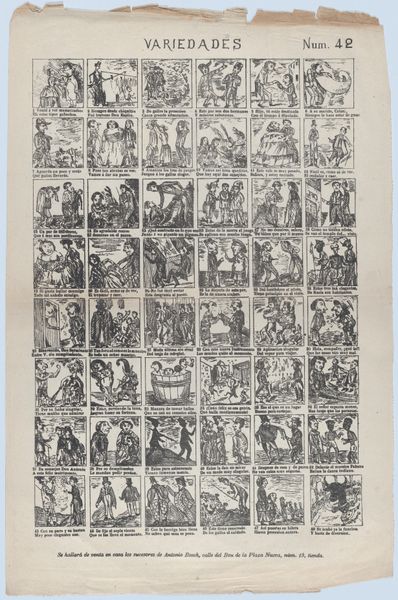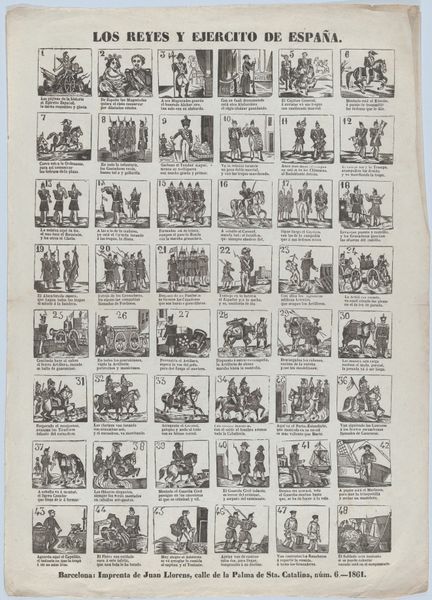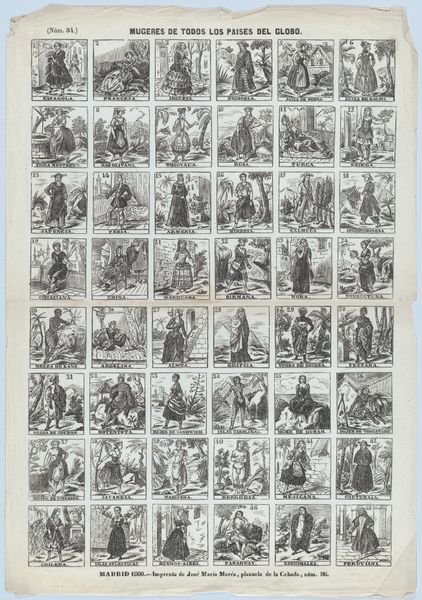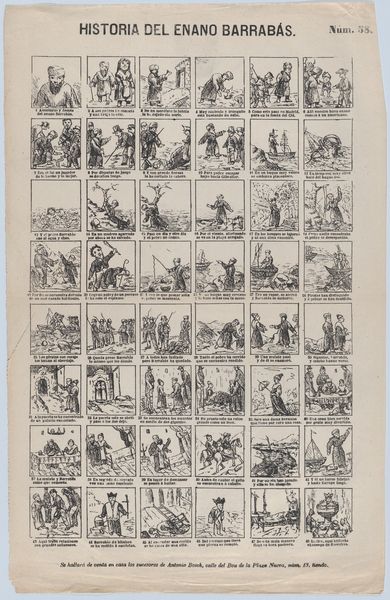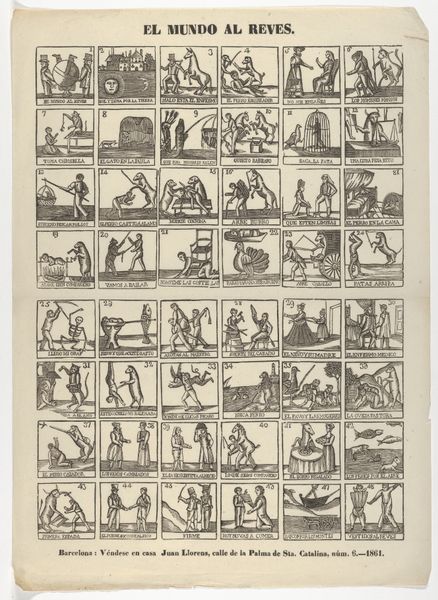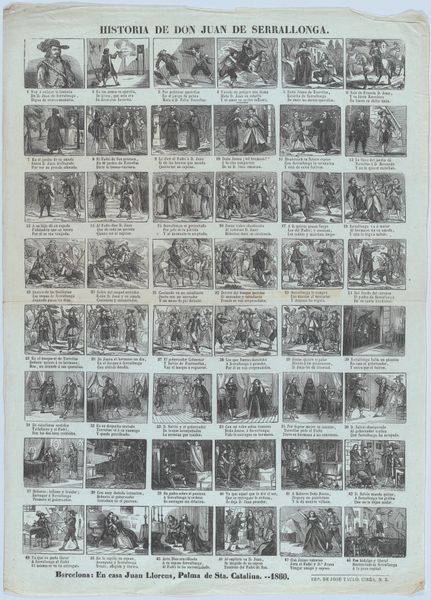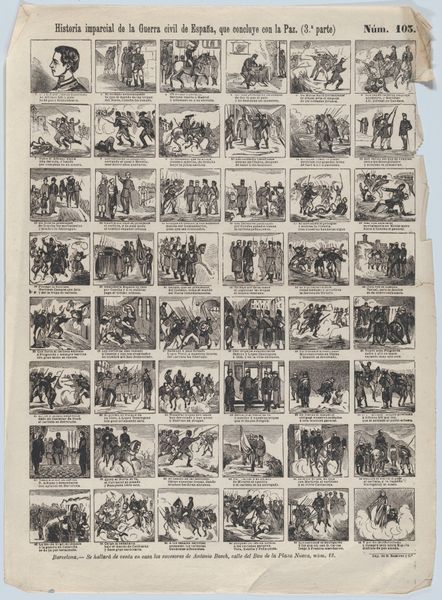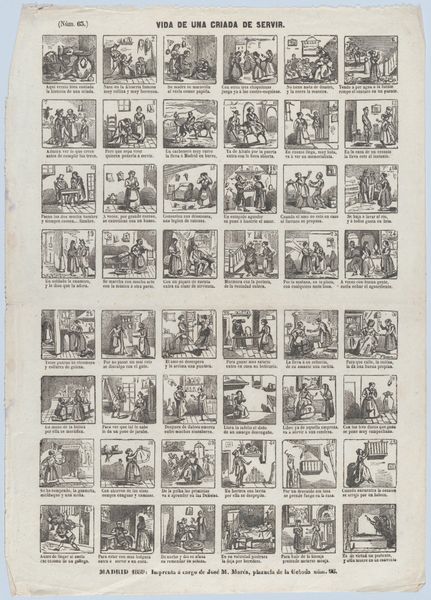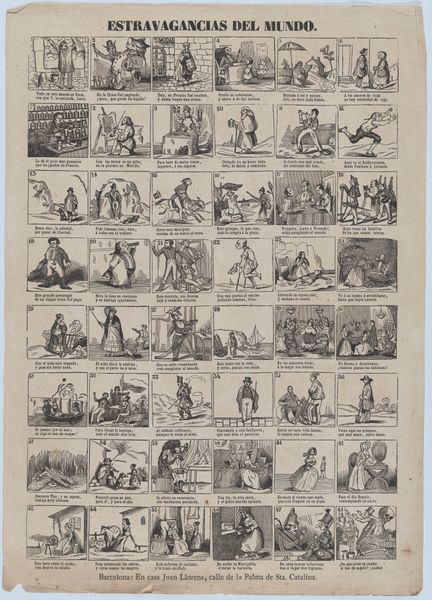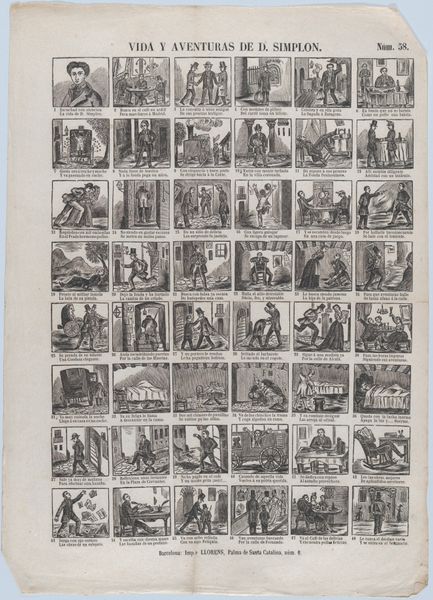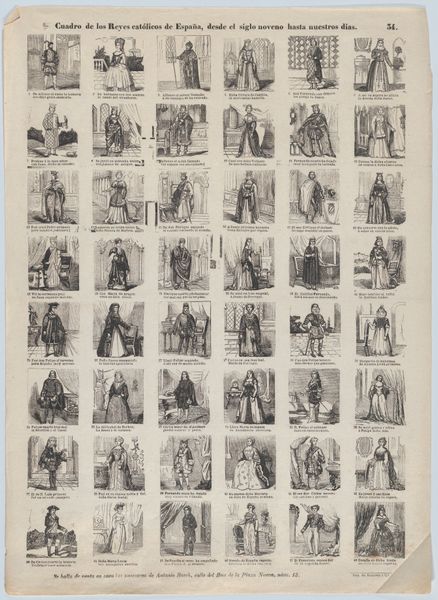
Broadside with 48 scenes relating to the world upside down 1864
0:00
0:00
drawing, print, pen, engraving
#
drawing
#
narrative-art
# print
#
caricature
#
comic
#
pen
#
engraving
Dimensions: Sheet: 17 5/16 × 12 3/8 in. (44 × 31.5 cm)
Copyright: Public Domain
Curator: Right in front of us is the print entitled "Broadside with 48 scenes relating to the world upside down." It's from 1864, by José María Marés. The print uses engraving and pen with drawing. Editor: Upside down indeed! I'm immediately struck by how densely packed it is; a chaotic jumble of reversed roles and expectations. The black and white amplifies that feeling of everything being topsy-turvy, and just slightly unnerving. Curator: Precisely! Consider the socio-political context of 19th-century Spain. These types of satirical broadsides became really popular; they allowed for a form of social critique during periods of unrest. Think of it as visual social commentary packaged as popular entertainment. Editor: So, beneath the comic veneer, we're dealing with real anxieties and societal fault lines. What's the function of laying it out on the page, almost like a grid of internet memes from 150 years ago? Curator: Yes! I am tempted to analyse it precisely as a 19th-century meme repository, too. The grid is essential to communicate a comprehensive inversion of social order and moral codes: domestic life gone wild, animals behaving like humans. In each cell of this absurd theatre, a social standard is deliberately flipped. Editor: And by mass-producing and distributing this work, Marés turns these contained inversions into a collective spectacle; shared humor in shared disruption. One wonders who these works specifically served; the poor? The clergy? Curator: The affordable printing meant a relatively wide reach across societal levels. Each vignette, like each contemporary meme, allowed individuals to access larger discussions of contemporary challenges and anxieties: economic instability, urbanization. And by extension the corruption of political powers or religious institutions. Editor: It makes one appreciate the enduring power of art that engages with the absurd as a means of questioning the status quo. Curator: Absolutely. And for revealing, underneath layers of humour, a potent mirror to our anxieties and aspirations.
Comments
No comments
Be the first to comment and join the conversation on the ultimate creative platform.
